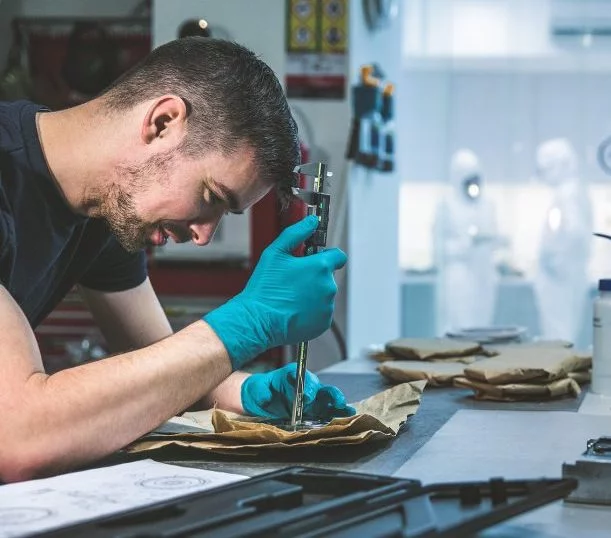Products
Your all-inclusive solution
All Products
Download our catalog
Get our Catalog
Applications
For demanding scanning applications, shorten inspections times by imaging at high line rates, with the superior sensitivity required to work at low light levels – both in the UV and visible. With Nüvü's unique offer of TDI readout on EMCCDs, benefit from unmatched imaging sensitivity for your manufacturing needs.

Completing quality inspections without slowing or interrupting operations can be a challenging task, as traditional imaging methods are susceptible to blurring at high speeds. This means either the target’s speed must be reduced, which makes inspection a limiting factor, or using very short exposures, which reduces image quality.
With fast acquisitions, there is less time for signal to accumulate on the sensor, which leads to camera noise dominating the image – rendering it unsuitable for analysis.
Where standard snapshot imaging fails, Time-Delay Integration (TDI) can greatly increase image quality on moving objects without the need to slow acquisition rates. This is because with TDI the camera readout process is synchronized to the same speed as the target. The camera accumulates signal for as long as the target is in the field of view of the camera, which results in an effective exposure several times longer than snapshot imaging.
More details on time-delay integration can be found in Nüvü’s EMCCD FAQ.
With TDI boosting image quality, the readout rate of the camera becomes the limiting factor in acquisition speeds. By using a CCD camera with multiple outputs, allowing parallelized pixel readout, the image readout speed can be increased several-fold which enables imaging very high-speed targets.
Nüvü Camēras’ HNu TDI features a sensor with 16 outputs, all read at 30 MHz, which allows the readout of 480 million pixels/sec on a high resolution sensor with high QE both in the visible and UV wavelengths. Combined with Nüvü’s patented electronics that significantly reduce camera noise, this creates an imaging solution that offers both high speed and high sensitivity and is suited to a variety of applications from semiconductor inspection to imaging flow cytometry.
Quality control is an important part of the production chain for many manufacturers, as it ensures that the product is delivered to the client free of any defects. However, observing a complex sample efficiently can prove challenging, especially when a limited amount of light reaches certain regions of the object or it is moving at high speeds.
With electron multiplication, the read noise in an EMCCD is negligible compared to other camera types. Nüvü Camēras additionally reduces the main source of noise in EMCCDs, clock-induced charges, with a complete redesign of EMCCD electronics. The result is a remarkably sensitive imaging solution that will offer higher quality images in shorter exposure times.
Nüvü’s patented electronics allow to drive the EMCCD detectors at higher frame rates for faster snapshot imaging, all while keeping exceptional sensitivity. Our cameras also feature Time-Delay Integration (TDI); a novel technique in which the detector is read synchronously with the movement of the target. This results in a much longer effective exposure time, and thus more signal collected, without any blurring or tracking necessary. TDI is the ideal imaging method for moving objects, such as production on a conveyor belt.
More details on time-delay integration can be found in Nüvü’s EMCCD FAQ.
Any questions about EMCCD or low light imaging? Nüvü Camēras experts can provide advices on your low light imaging options.